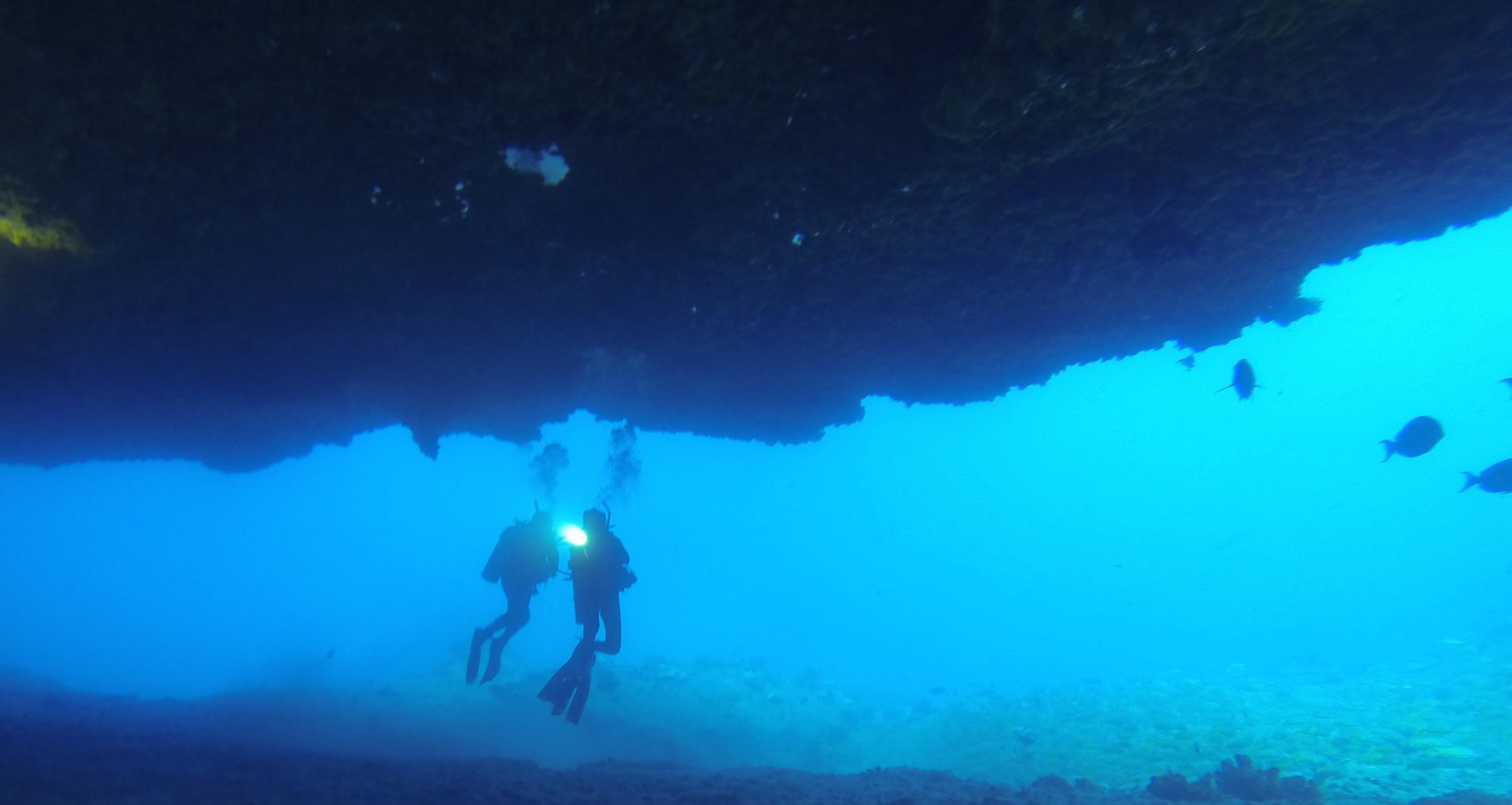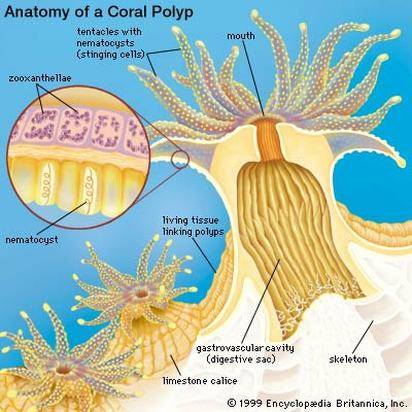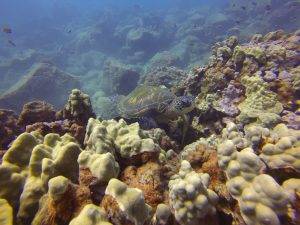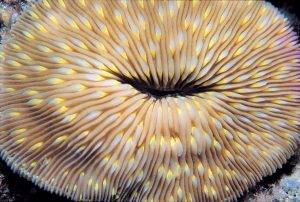A few years ago there was an ad campaign that ran in several national level magazines.
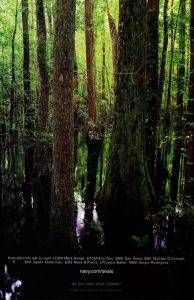
The ad was designed to promote recruitment to the US Navy Seals. It had a picture of a swamp and a caption underneath that said “Pictured from left to right . . .” I’m guessing that there really were soldiers hidden in the picture but the only thing I know for sure is I never could see them.
I think of that ad when I consider the unique characteristics of a Commersons Frogfish. Like a special forces soldier, the frogfish is aggressive and fearsome. Unlike a special forces soldier, though, only fish need to fear a frogfish.
The Waikiki Aquarium says on its frogfish page that “The frogfish is superbly adapted for its habit of ambushing prey.” The article explains some of the adaptations which make that statement true. First, the fish’s head is mostly mouth which enables it to swallow other fish as large as itself. Second, the fish’s small gill openings are tucked away behind the pectoral fins so that exhaled water will not reveal the fish’s presence to potential prey. Third, and this is the part that reminds me of the Navy recruiting ad, is that frogfish are so good at camouflage that they can be difficult to distinguish from the section of reef they are situated upon. They sometimes even have real algae growing on their skin!
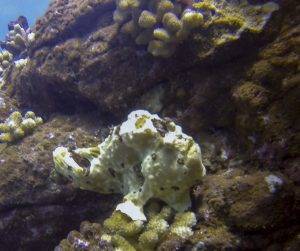
When we scuba dive Kauai, we have the opportunity to view a number of creatures that are skilled at camouflage but frogfishes are among the most specialized of ambush predators; their camouflage is so effective that biologists call it “aggressive mimicry”.
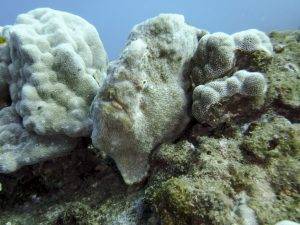
As members of the same family as the deep sea Anglerfish, frogfish have a special spine that they can use as a sort of “fishing pole” to lure in a potential meal that needs to get just a little bit closer to be food. When an unlucky creature gets to within about the distance of the frogfish’s body length, the frogfish will open its cavernous mouth so quickly that the rapid suction will draw the prey into its mouth. This whole process takes place in just six to ten thousandths of a second, making this one of the fastest capture mechanisms in the animal kingdom.
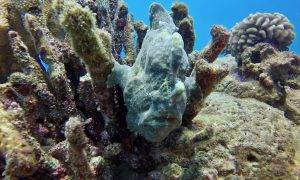
We have several resident frogfish living at Koloa Landing – one of Kauai’s best dives. It is a virtual certainty that we pass by at least one of them on any given dive tour. The trick is to actually see one. For your best chance at coming face to face with a frogfish while scuba diving Kauai, book a tour with Garden Isle Divers today!
